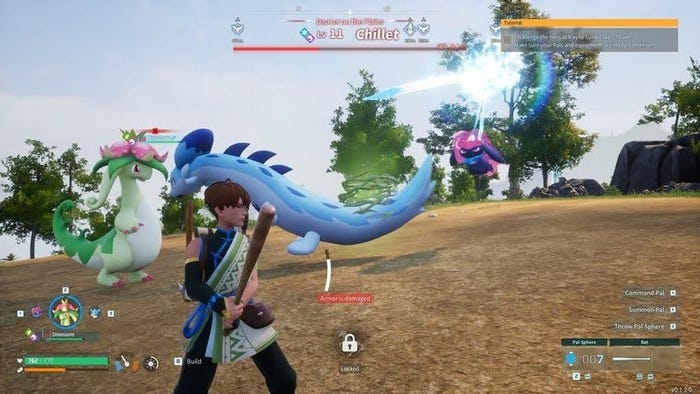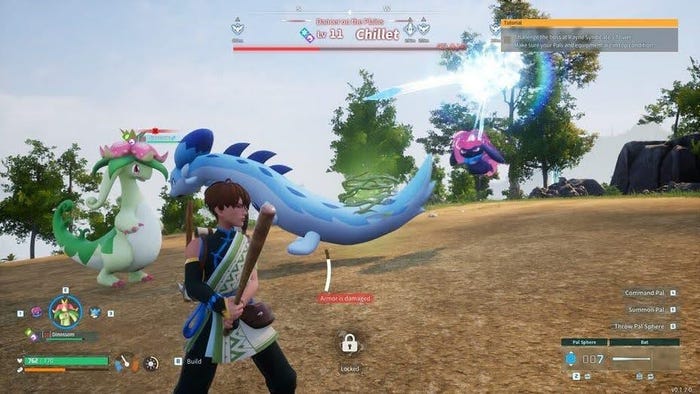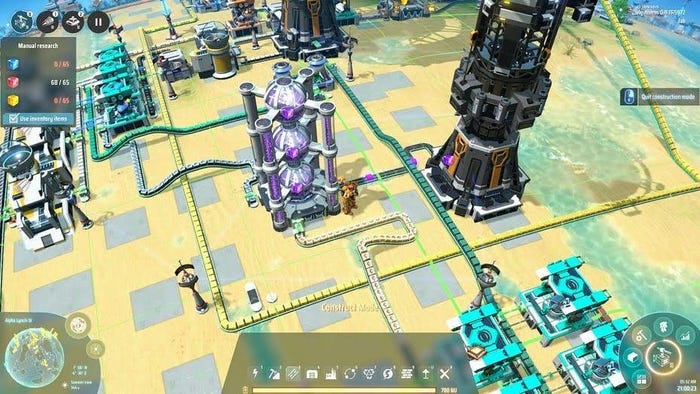
Palworld is looking to be 2024’s Vampire Survivors — with a game that came out to massive, overwhelming success within two weeks. The game, and the studio is now set up for a very long time. While things can always go wrong and early access is never certain, it’s not going to overlook how this game resonated with so many people in such a short period of time. Likewise, it has developers, analysts, and publishers scratching their heads as to what to take away from it. I want to talk about why Palworld has done so well, and how it has more to do than just “edgy Pokémon.”
Survivalmon
If you somehow don’t know what we’re talking about, Palworld was released at the end of January with the marketing of making an “adult Pokémon” game. In it, you wake up on an island and must survive and craft your way to success; with the added twist that the world is full of creatures called Pals. The pals are designed to look similar to Pokémon, and there was a whole debacle surrounding their likenesses during opening week.
The pals must be caught in the field by attacking them and using pal orbs to capture them and add them to your roster. Where things change is how base-building and crafting are set up to take advantage of them. Like any survival game, you are going to be doing tons of crafting, and like those games, it is very slow to do. Every pal comes with different proficiencies in specific tasks. By having a pal assigned to your base, they will automatically do any job that fit their profile. This allows you to turn your base into your own pal settlement where they will handle all the work for you while you go out and explore.
While the game was certainly billed to appeal to adults looking for a creature collector, the developers have surprisingly made one of the best introductions to survival games for fans of all ages.
Pal Progression
Palworld’s subtle genius with its design is that while you can certainly approach with the whole notion of “Pokémon with guns,” the game does a great job of creating an effective gameplay loop around exploration, base building, and pal collecting. To explore more of the world and find more pals, you are going to need better gear. To get access to said gear, you’ll need to upgrade your base and level up to unlock them, but base upgrades require resources and leveling up is predominately earned by capturing pals. Your ability to manage and use pals will also grow as you craft pal-specific gear that gives them additional utility out in the field.

Palworld provides a great progression loop all centered on acquiring more pals. (source: Author)
In this respect, Palworld is one of the easiest survival games to get into and start seeing progress; a far cry from the greats of the genre like 7 Days to Die or Rust. In a way, Palworld is similar to Subnautica — both games are more focused on you experiencing the world and unique elements rather than on the worry about basic survival needs. What I really want to see is embracing managing your bases with pals and turning the game into more of a management sim rather than survival, but where the future lies for this game remains to be seen.
Strong Bones
Palworld as it sits after launch is a fantastic foundation that could go in a variety of directions. However, that’s all that’s there for the game now. The survival, base building, and pal management systems are all basic. Any one of those three are not deep enough or interesting enough on their own to be an entire game, and why the developers have added in so much from other designs.
The success of this game at launch has put the developers into both an enviable position, and a scary one. They now have more money than I think they ever expected to get from the game, but that now means that a lot more eyes are now on them to deliver future support and content.
With that said, I want to talk about the major takeaways from the success of the game.
Pal Learning
As I said at the start, a lot of people looked at Palworld as nothing but a lazy knockoff, or a game that’s just about shooting Pokémon with guns aren’t understanding why the game appealed to so many people, and why it blew up so fast after launch.
Let’s start with marketing, the initial teaser of “Pokémon with guns” is a great marketing bullet point — it’s short, striking, and it immediately piques interest. As I talk about with marketing for today, you need to be able to sell the unique aspects of your game within 5 seconds or less; doesn’t matter what game you’re making, it’s always 5 seconds or less.
Good marketing will get someone to check out your game but keeping them interested requires more. Palworld is a potluck of game mechanics and systems, but it’s a good potluck that feels solid to play. The problem a lot of survival crafters have is that they are notoriously bad at the new player’s experience. No one immediately enjoys the gameplay of Rust when you have nothing but a loincloth — it’s all about the hours of building, gathering resources, and reaching a point where you have a piece of land to call your own that you can defend. While that certainly works for the hardcore fans, it is monumentally unappealing for someone new.
What’s appealing about Palworld, just like with a lot of successes from indie games, is that the game gets to the point about why you want to play it and makes it as appealing as possible. A lot of developers tend to scoff at “easy or simple games” and use it as an insult, but it is actually very hard to make a game that is very easy to get into. Good pick-up-and-play is underrated as a selling point for consumers. With Palworld, you can reach a point of having a little base with pals taking care of the simple stuff within 30 minutes of playing it. The survival side, much like in Subnautica, is there to be a presence, but not the focus on the overall experience.

Dyson Sphere Program provides a lot of the depth like Factorio, but does more to streamline the general play. (Source: Author)
I feel a lot of people discount the notion of “entry-level games” into genres. You can still have depth and complexity at the end-game, but getting people through the door is unquestionably harder to achieve. There are many ways of making a game a good starter for people — focusing on quests and tutorials, a good UI/UX, removing complicated elements and going with something easier to learn. Dyson Sphere Program succeeded not by directly copying Factorio and other logistics games, but making one that was far more approachable and easier to get started than other entries in the market.
And when everyone chases after the same extreme end of the genre scale, it ends up with just a lot of games that feel derivative and the one or two that massively succeeded continue to succeed.
Paling Around
It’s unclear at the moment where things will go for Palworld, but it certainly started 2024 with a bang, and one I feel a lot of people are going to be trying to chase after for a long time. I personally hope that this does open things up for creature collectors that aren’t just about turn-based combat, and now I really want to do my own take on Dyson Sphere Program meets Pokémon.
As a final point, for anyone interested in studying design, looking at what made Palworld work is a great lesson in picking apart a popular genre to do something different with it. Don’t be afraid to mix things up with a genre if you have a great foundation to start with, as if you can’t compete directly with the big names, then do something that they would never think of.
-
If you would like to support what I do and let me do more daily streaming, be sure to check out my patreon.






